Exploring the world’s remote regions often reveals some of nature’s most exquisite secrets, including a variety of exotic butterflies. These butterflies, each uniquely adapted to their environment, display stunning colors and patterns that are rarely seen by most people. From the rainforests of Southeast Asia to the secluded woodlands of Europe, these elusive species offer a glimpse into the incredible diversity of life on Earth. Discovering them not only highlights their beauty but also underscores the importance of preserving their habitats for future generations.
Madagascan Moon Moth (Argema mittrei)
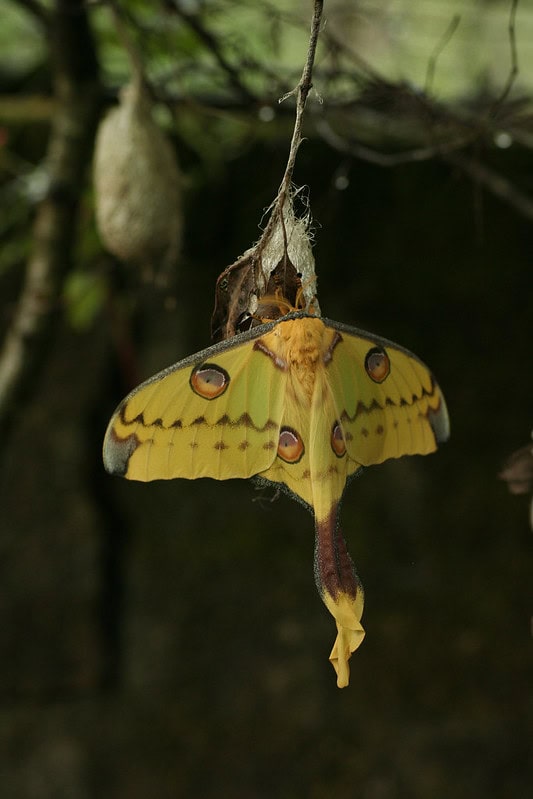
The Madagascan Moon Moth, native to the island of Madagascar, boasts vibrant green wings with eye-catching tails. These tails, extending up to six inches, serve as a defense mechanism against predators. Its wingspan can reach up to seven inches, making it one of the largest moths in the world. This species thrives in the dense rainforests, where it spends its short adult life of only five days. The larvae feed on eucalyptus leaves, which are abundant in their remote habitat.
Blue Morpho (Morpho peleides)
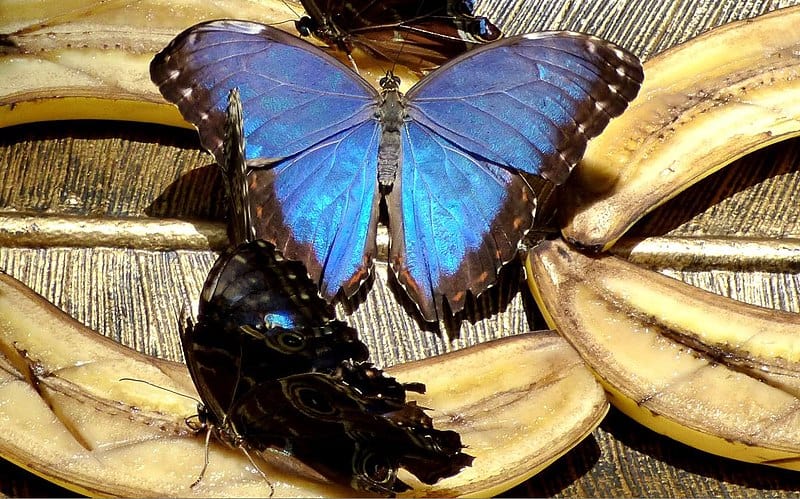
The Blue Morpho, renowned for its iridescent blue wings, is a native of the Central and South American rainforests. When in flight, the vivid blue of its wings contrasts strikingly against the green foliage. However, when at rest, the brown underside of its wings provides perfect camouflage, blending seamlessly with the environment. This butterfly prefers the understory of the rainforest, where it feeds on rotting fruit and tree sap. Its unique color is due to microscopic scales that reflect light, rather than pigments.
Queen Alexandra’s Birdwing (Ornithoptera alexandrae)
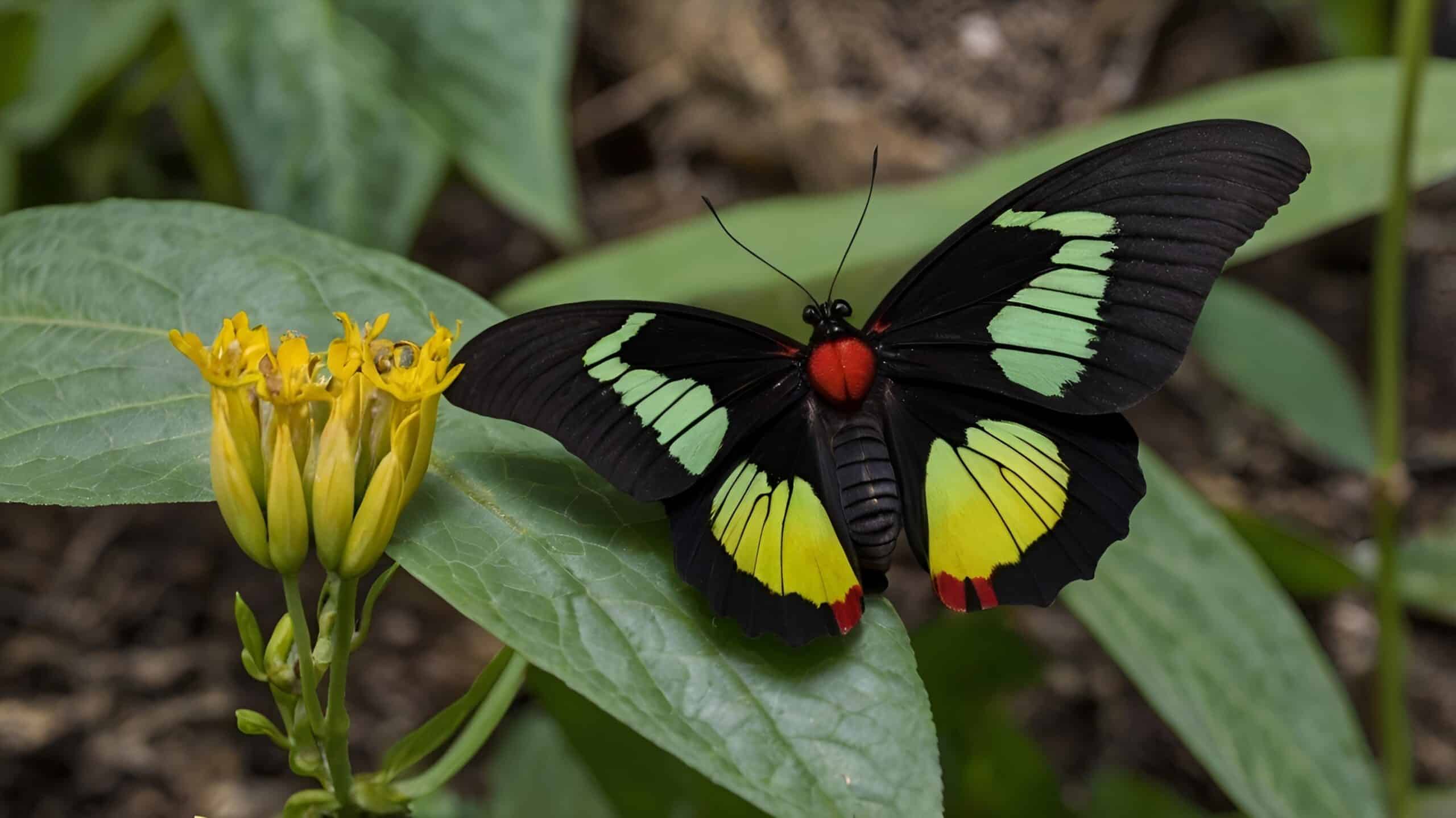
Found exclusively in the rainforests of Papua New Guinea, Queen Alexandra’s Birdwing is the largest butterfly in the world. Females can have a wingspan of nearly a foot, dwarfing many other butterfly species. The butterfly’s striking colors—black, green, and blue—make it a prized sight among entomologists and butterfly enthusiasts alike. Despite its beauty, this species is endangered due to habitat loss from deforestation. It relies heavily on specific host plants like the Aristolochia vine, which grows in its remote habitat.
Rajah Brooke’s Birdwing (Trogonoptera brookiana)
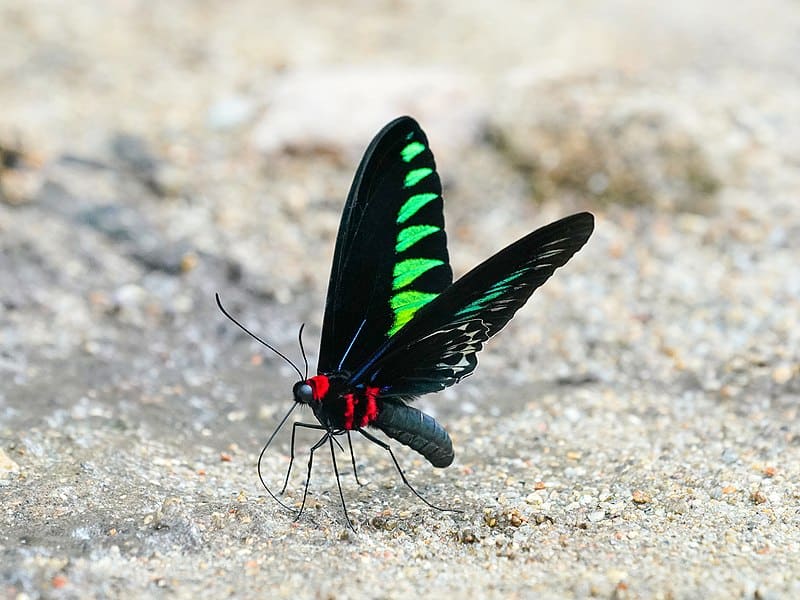
Named after James Brooke, the Rajah of Sarawak, this butterfly is primarily found in the rainforests of Borneo and Sumatra. Its vivid green and black wings are adorned with red spots near the body, making it easily distinguishable. The butterfly prefers lowland and hill forests, where it feeds on the nectar of various flowers. This species is often seen fluttering near streams, where males congregate to sip minerals from the soil. Its striking appearance and elusive nature have made it a sought-after specimen.
Ulysses Butterfly (Papilio ulysses)
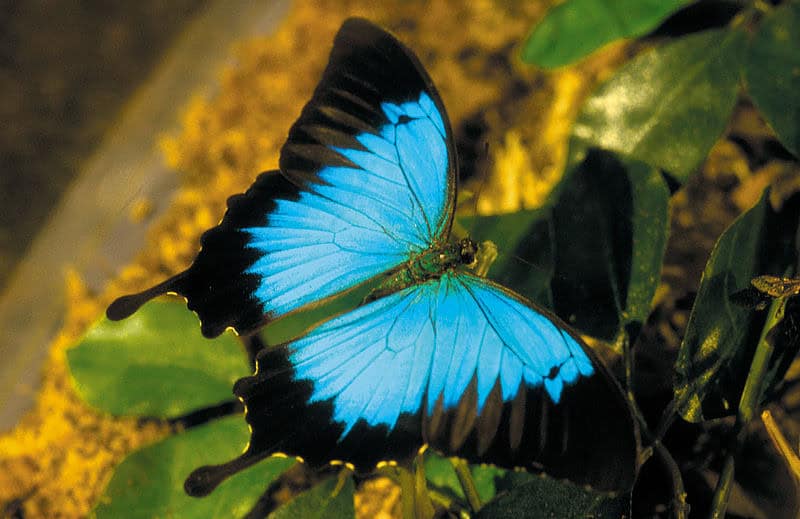
The Ulysses Butterfly, with its electric blue wings, is native to the tropical rainforests of northeastern Australia, Papua New Guinea, and the Solomon Islands. Its vibrant color makes it a popular symbol in Australian tourism. However, spotting one in the wild can be a challenge, as it flits quickly through the forest canopy. The butterfly’s larvae feed on a variety of rainforest plants, including the pink flowered Euodia, which attracts the adults. Despite its beauty, the Ulysses Butterfly’s population is threatened by habitat destruction.
Atlas Moth (Attacus atlas)
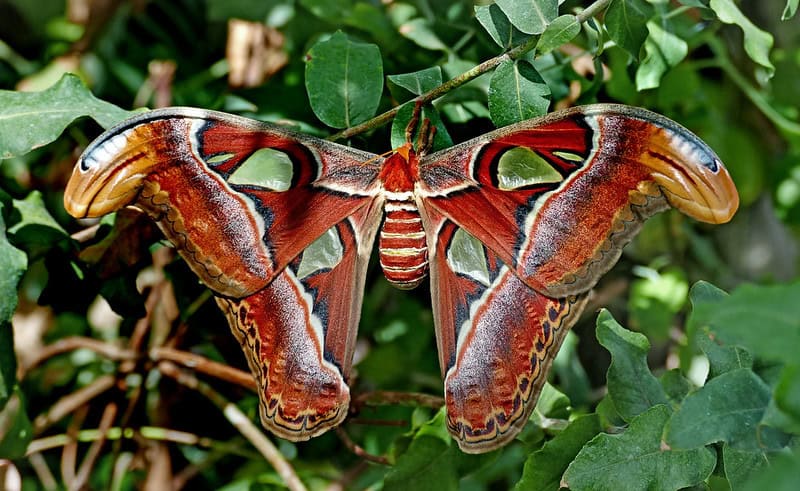
The Atlas Moth, native to the forests of Southeast Asia, is one of the largest moths in the world, with a wingspan that can exceed 10 inches. Its wings feature a complex pattern of browns, reds, and pinks, resembling a snake’s head, which helps deter predators. This nocturnal creature is found in remote, tropical rainforests where it spends its life as a larva feeding on the leaves of various trees. As an adult, the moth does not eat and relies solely on the energy stored from its larval stage. Despite its short lifespan, the Atlas Moth’s size and beauty have made it a subject of fascination.
Sri Lankan Birdwing (Troides darsius)
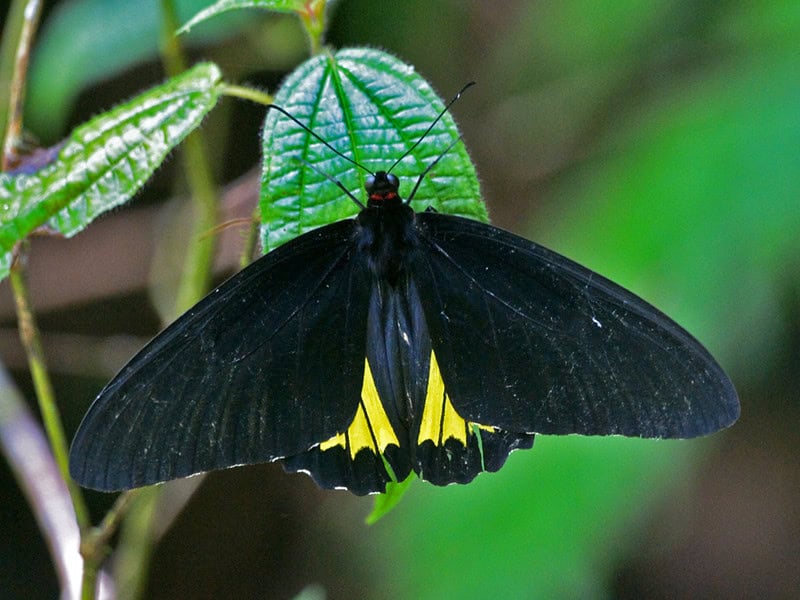
The Sri Lankan Birdwing, Sri Lanka’s national butterfly, is recognized by its large size and vibrant black and yellow coloration. Found in the island’s lush rainforests, it favors high-altitude forests and the dense underbrush. The butterfly’s larvae feed on the poisonous Aristolochia plants, making the adults toxic to potential predators. Its striking colors serve as a warning to predators, deterring attacks. This species is often seen fluttering through the forest canopy, its bright wings creating a vivid display against the green foliage.
Green Dragontail (Lamproptera meges)

The Green Dragontail is a unique butterfly found in the forests of Southeast Asia, including Thailand, Malaysia, and Indonesia. Its long, thin tail and translucent wings make it one of the most distinctive butterflies in the region. Unlike many butterflies, the Green Dragontail is a fast and erratic flier, often seen skimming over streams and forest floors. Its larvae feed on plants in the family Aristolochiaceae, which are found in its remote forest habitats. The adult butterfly’s delicate wings and unusual shape make it a rare and beautiful sight.
Purple Emperor (Apatura iris)
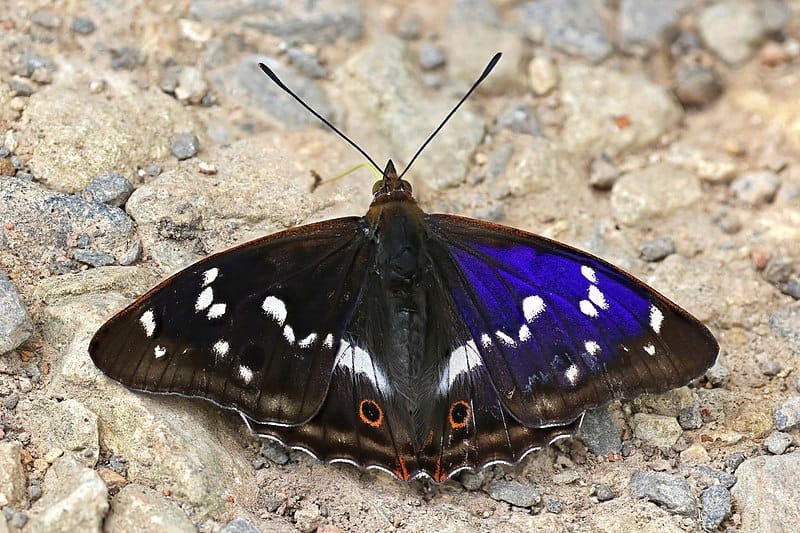
The Purple Emperor, native to the woodlands of Europe, particularly the remote forests of England, is known for its iridescent purple wings. These butterflies are elusive, often staying high in the forest canopy, where they feed on aphid honeydew, tree sap, and even animal dung. The males are particularly territorial, often seen defending their treetop perches from intruders. Their larvae feed on willow and poplar leaves, and they spend the winter months in a dormant state, camouflaged as twigs. The butterfly’s regal appearance has made it a favorite among butterfly enthusiasts.
Hecales Longwing (Heliconius hecale)
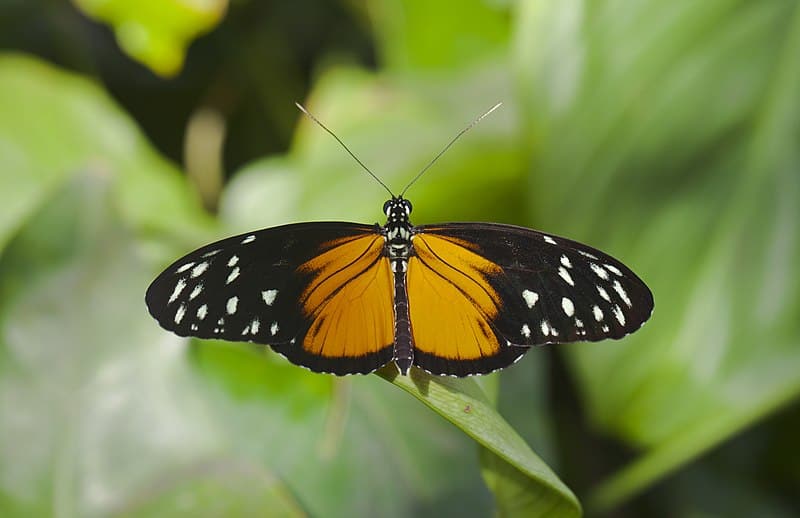
The Hecales Longwing, also known as the Tiger Longwing, is a striking butterfly found in the remote rainforests of Central and South America. Its wings are adorned with bold black and orange patterns, mimicking the coloration of toxic species to ward off predators. This butterfly is known for its slow, deliberate flight, often gliding gracefully through the undergrowth. It feeds primarily on nectar from passionflowers, a plant that also serves as the host for its larvae. The butterfly’s mimicry and behavior make it a fascinating example of nature’s adaptability.
Blue Clipper (Parthenos sylvia)
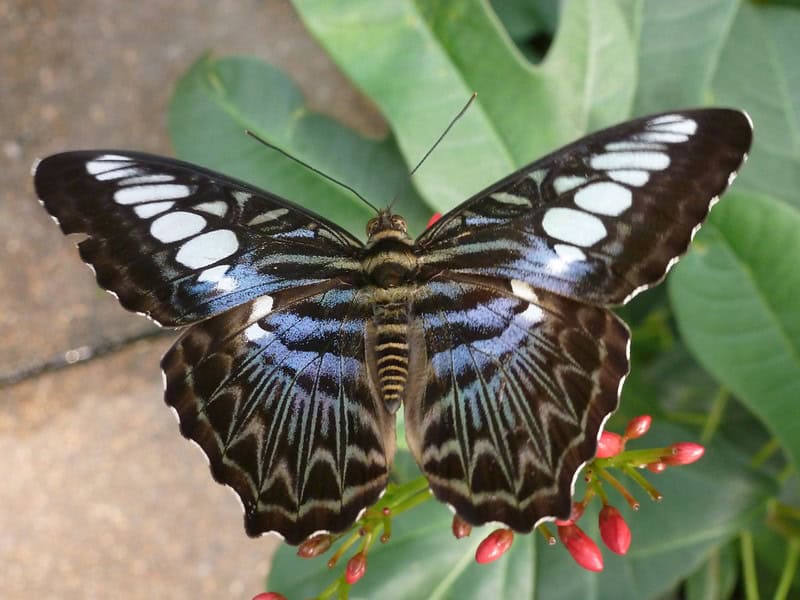
The Blue Clipper is a fast-flying butterfly found in the remote forests of Southeast Asia, including the Philippines and Borneo. Its wings are a mix of blue, black, and white, with a distinctive checkered pattern. This butterfly prefers sunlit forest clearings and riverbanks, where it can often be seen basking in the sun. Its larvae feed on plants from the family Menispermaceae, which are common in its habitat. The Blue Clipper’s speed and agility in flight make it a challenge to photograph, adding to its allure.
Peacock Swallowtail (Papilio blumei)
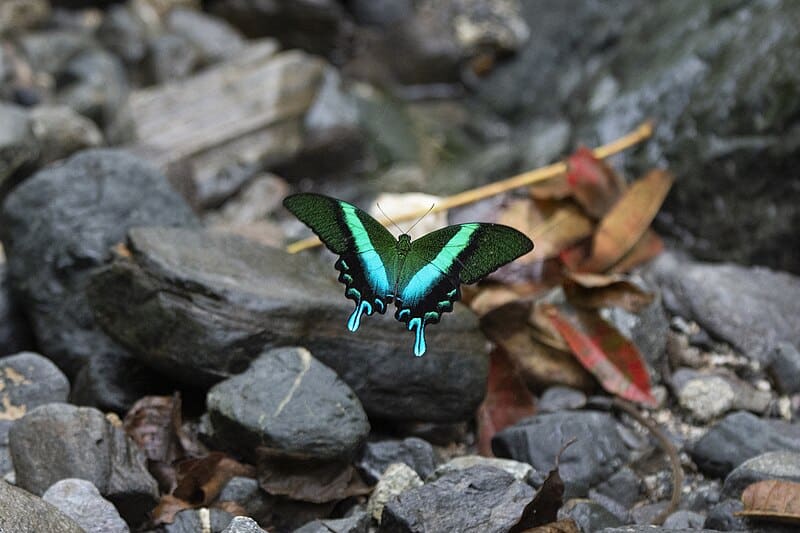
The Peacock Swallowtail, native to the Indonesian islands of Sulawesi and Maluku, is known for its vibrant iridescent green and blue wings. These colors are produced by microscopic structures that reflect light, giving the wings a shimmering effect. The butterfly is found in primary and secondary forests, often near streams where its larvae feed on citrus plants. It is a strong flier, often seen darting through the forest canopy. The Peacock Swallowtail’s beauty and rarity make it a highly prized species among collectors.
Giant Swallowtail (Papilio cresphontes)
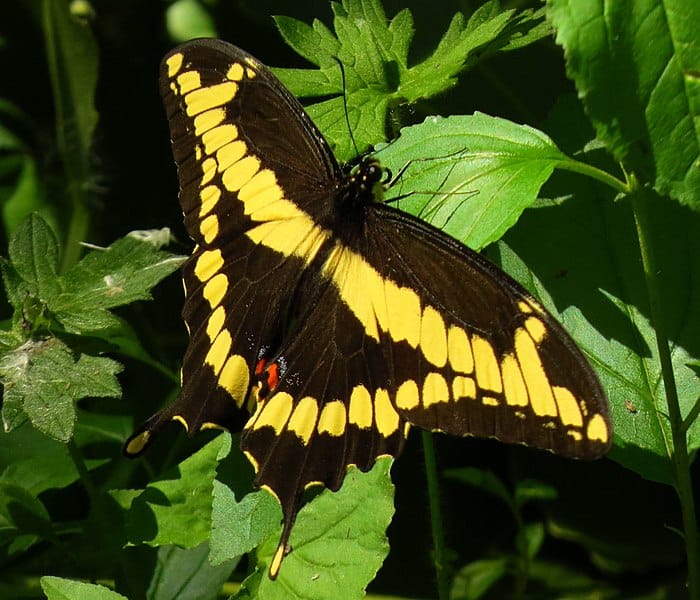
The Giant Swallowtail, found in the remote forests of North and Central America, is one of the largest butterflies in the region, with a wingspan of up to six inches. Its black wings are adorned with striking yellow bands, making it easily recognizable. This butterfly prefers open woodlands and forest edges, where it feeds on nectar from a variety of flowers. The larvae, known as “orange dogs,” feed on citrus plants and are considered pests by farmers. Despite this, the Giant Swallowtail’s graceful flight and striking appearance make it a favorite among butterfly enthusiasts.
Scarlet Mormon (Papilio rumanzovia)
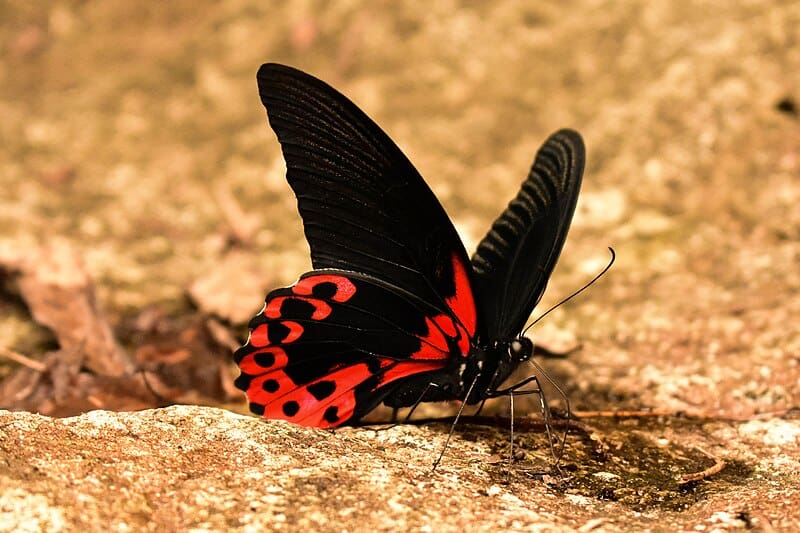
The Scarlet Mormon, native to the remote forests of the Philippines, is a large butterfly known for its deep red and black coloration. The males are particularly striking, with velvety black wings and a bright red body, while females have more varied patterns. This butterfly is often seen in forest clearings and along riverbanks, where it feeds on nectar from a variety of flowers. Its larvae feed on citrus plants, which are abundant in its habitat. The Scarlet Mormon’s dramatic appearance and elusive nature make it a captivating sight in the wild.
Great Purple Emperor (Sasakia charonda)

The Great Purple Emperor, native to the forests of Japan, Korea, and China, is a large butterfly with iridescent purple wings that shimmer in the sunlight. This butterfly prefers deciduous forests, where it can often be seen feeding on tree sap and rotting fruit. Males are particularly aggressive and territorial, often engaging in aerial battles over prime feeding spots. The larvae feed on hackberry trees, which are common in its habitat. The Great Purple Emperor’s regal appearance and behavior have earned it a revered place in Asian culture.
This article originally appeared on Rarest.org.
More From Rarest.Org

Cliffside villages offer some of the most stunning views on earth. Perched high above the sea, these unique places blend natural beauty with rich history. Read more.
Guitar pedals have become essential tools for musicians seeking to craft unique sounds and tones. Some pedals stand out for their impact on music history and their enduring popularity. Read more.
15 Most Lavish Resorts and Hotels Globally

Exploring the world’s most lavish resorts and hotels offers a glimpse into unparalleled luxury. These destinations redefine opulence, blending stunning architecture with breathtaking locations. Read more.

